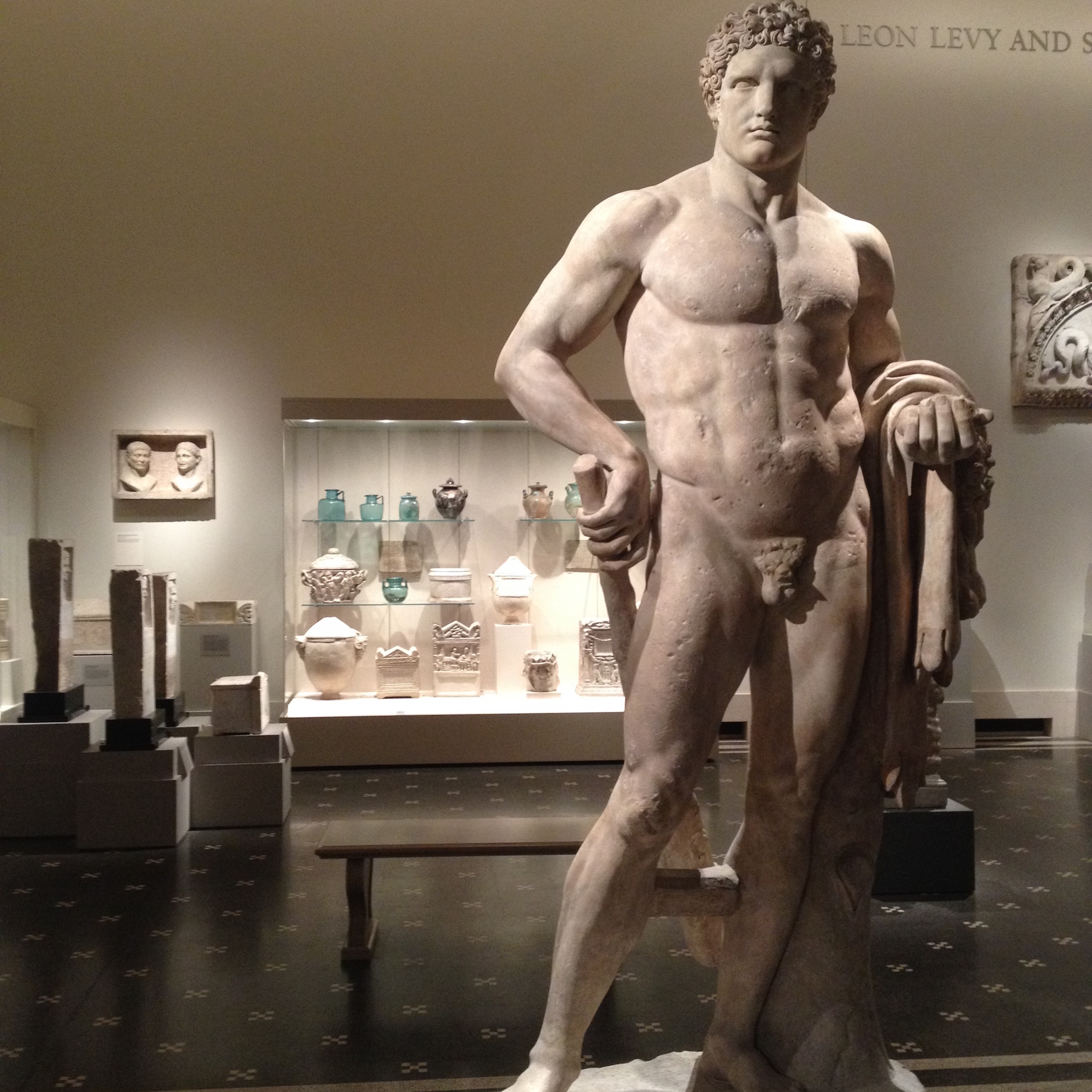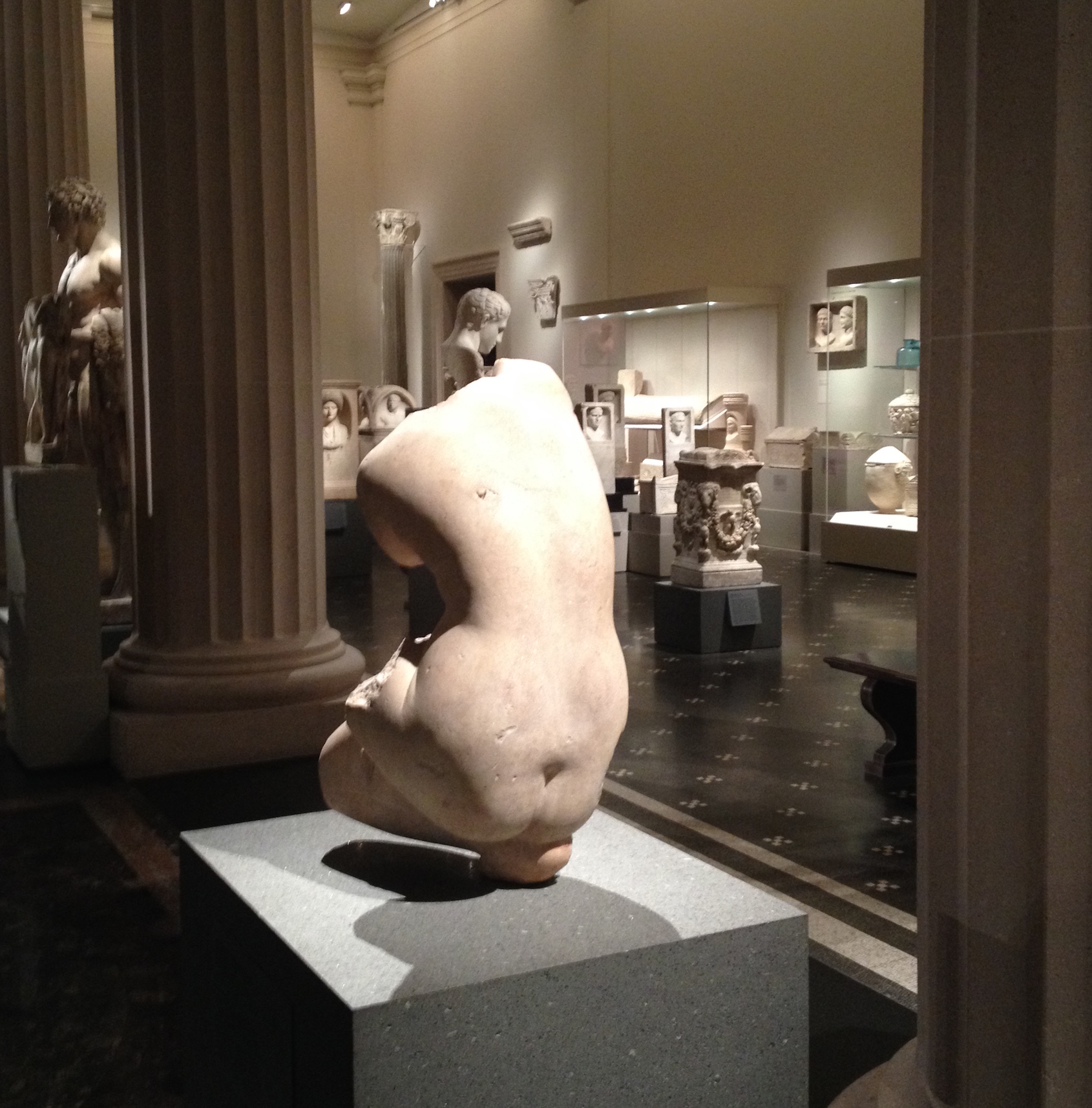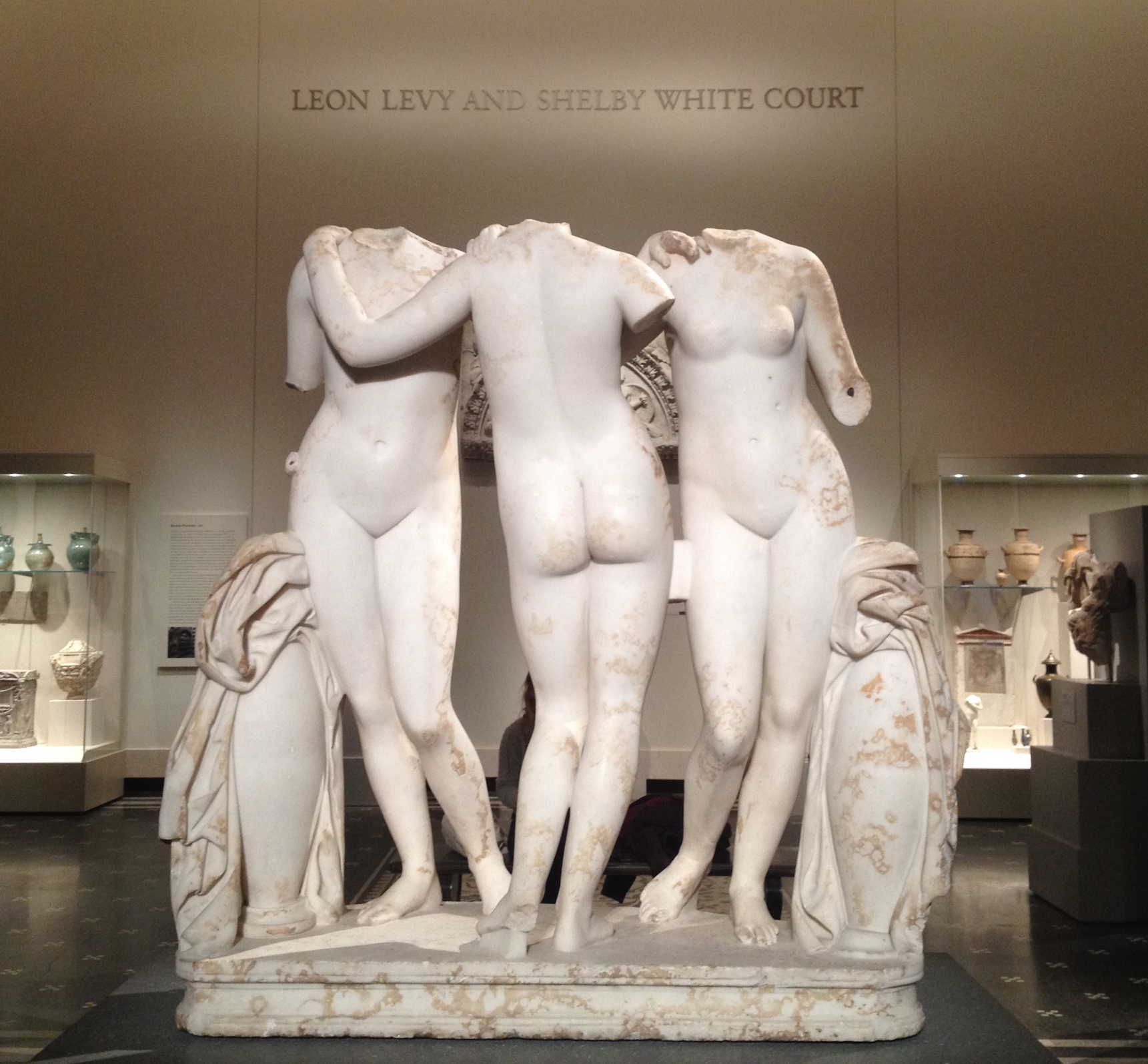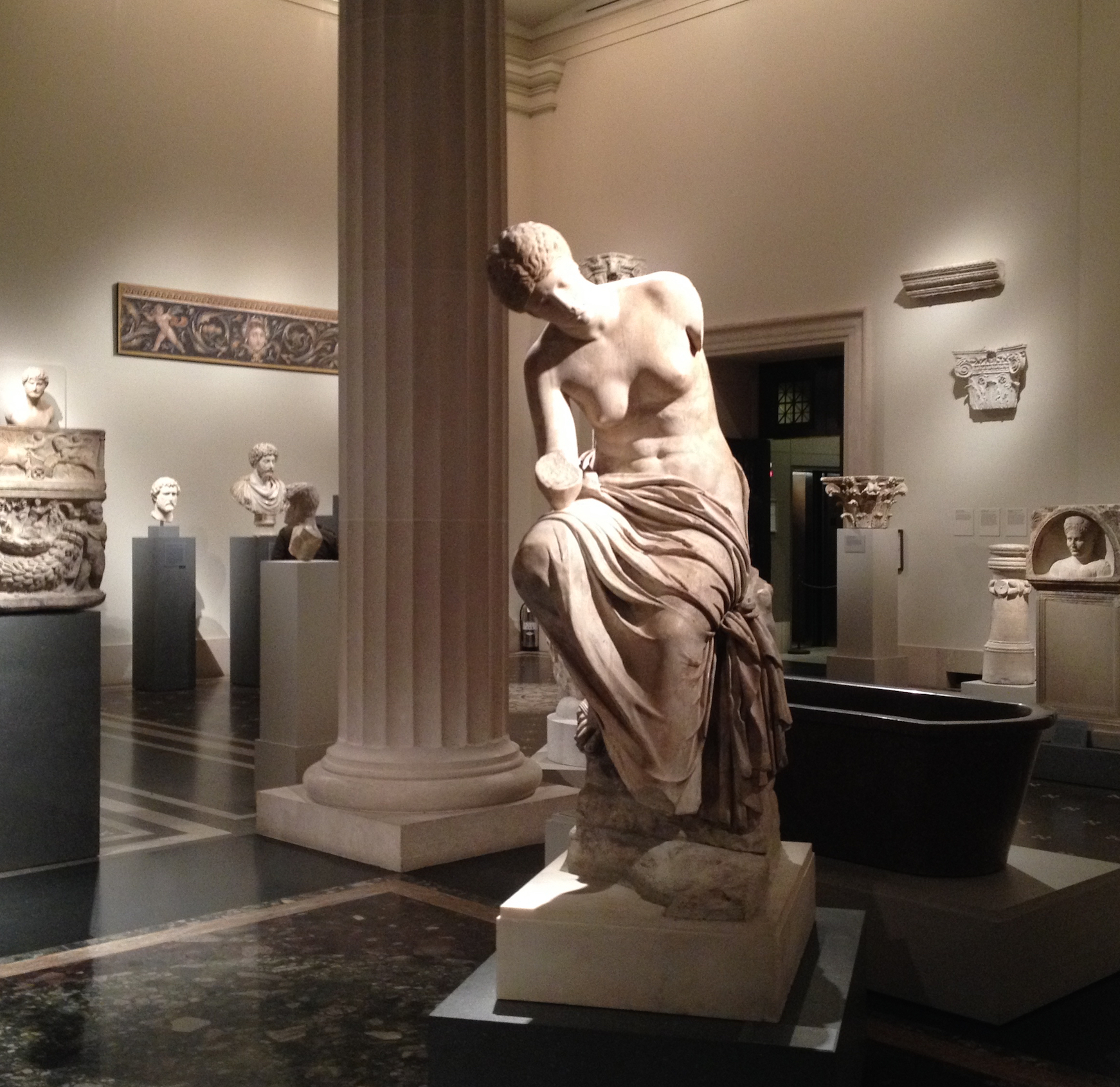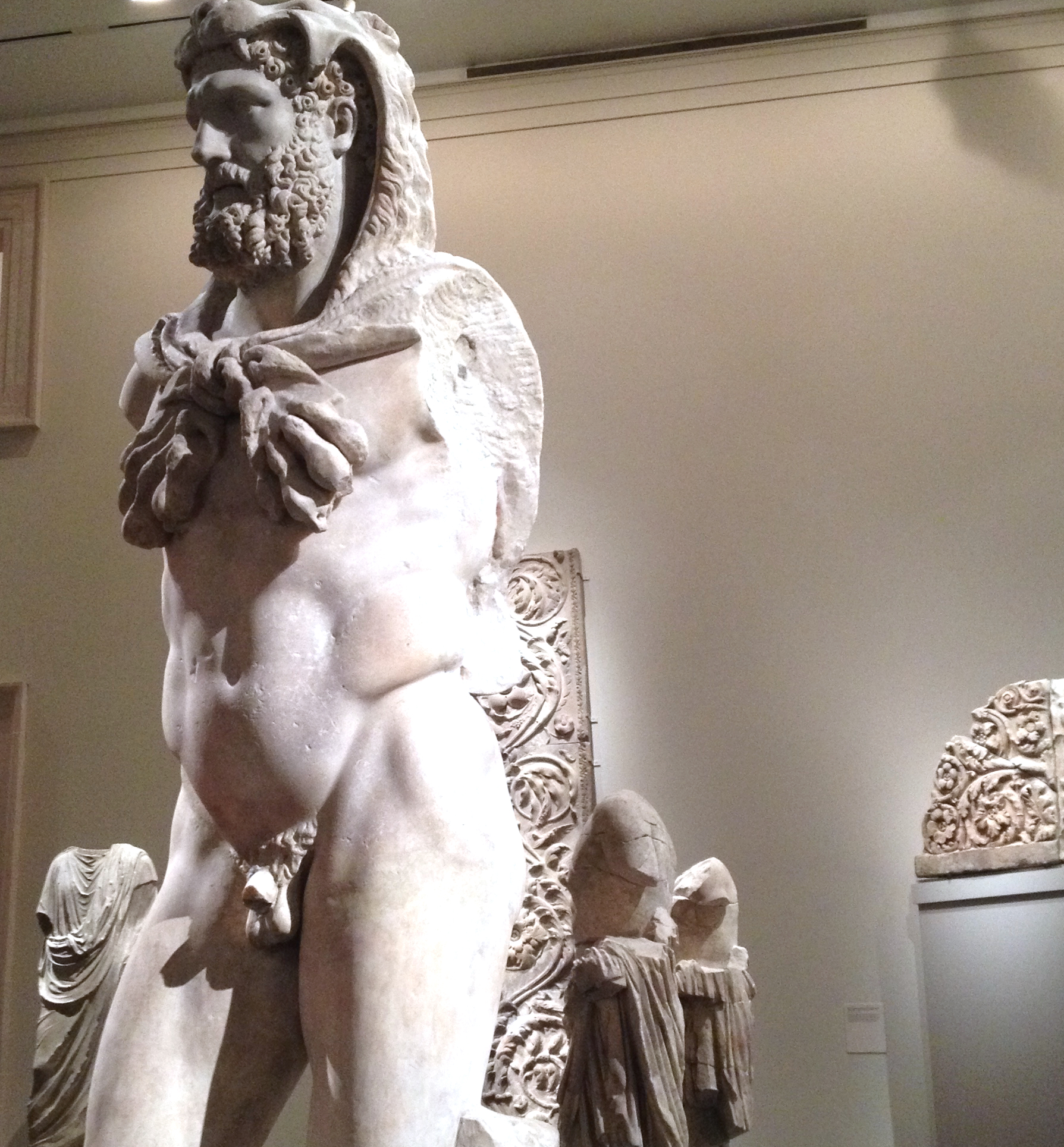Saturday Evening at the Metropolitan
My favorite place in the Metropolitan Museum is the Leon Levy and Shelby White Court in the Hellenistic and Roman Gallery. On March 5th, Saturday evening, the light shining down on the statues was simply divine.
This display of statues has a fascinating layout. Sitting on the bench in front of a trickling fountain, you can see two versions of Hercules: one as a youth, the other as a grown man. Both show his physical strength, protruding thighs, proud chest, and the symbol of his first Labor - slaying the Nemean lion. The youth has a symmetrically toned six pack torso, his cheeks and chin are smooth, his eyes gaze out into the future, his pose holds a slight arrogance. The older Hercules is bearded, accomplished, wise and leading.
Surrounding the two Hercules are female forms of beauty. Soft, subtle shadows angle across the curves of the breasts and round thighs of the Three Graces. Statues of Aphrodite convey the caress, the desire, the greatest passion.
In the middle of this grand ballroom of antiquities, the master of the symphony, is Dionysus - god of ecstasy, wine and celebration.
Time doesn't exist in real fashion here. The boy Hercules is in the same time frame as the man Hercules. After two thousand years of his creation by humans, he exists in a mythical state beyond the limitations of time. In a similar way, when time stretches out into the next thousands of years, the distance between our own childhoods and our adult lives will be reduced, relative speaking, to no more than the twelve small paces from one side of this room to the other.
Feelings of sensuality and shame, softness and sanguinity, desire and strength, overtake us as we look at these idealized nude figures. They conjure and excite us just as they have been conjuring and exciting humans for thousands of years. What remains, in a Platonic play of forms, is a transcendent form of mankind.
I left this Gallery wanting to live in a manner that contributes to mankind's timeless beauty and venerated attributes. Yet, I also wanted to enjoy more the superstructure that created these statues: the mysteries, contradictions and struggles of being not impeccable gods, but flawed humans.

